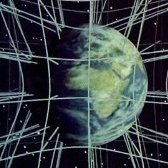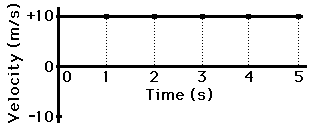Leaderboard
Popular Content
Showing content with the highest reputation on 05/25/20 in all areas
-
3 points
-
I am unsure why you would think that - you have never upset me in the slightest with anything you have said, so no apology is necessary at all. But just to set the record straight anyway: it is highly unlikely that I know more about GR than you do I am merely an interested amateur, and everything I post here - without exception - is entirely self-taught. Unlike Mordred, I have no academic credentials in any area of science; truth be told, I never even went to university at all. My understanding of GR and physics in general is cobbled together from a variety of textbooks over the years. I am on the autism spectrum, and one of the defining characteristics of people on the spectrum is that we tend to get totally absorbed by narrow areas of interest (this is called monotropism) - for me that just happened to be physics, specifically GR, at least in the beginning; so I did a lot of reading and self-study in that area. In recent years my interests have diversified somewhat, and I also got involved with certain areas of philosophy and spirituality. Also, understanding GR is natural and intuitive to me, in a way that does not seem to be the case for most neurotypical people; perhaps people on the spectrum find it easier to step outside established paradigms (in this case Newtonian physics) and look at things from a different angle. We tend to have difficulties with other aspects of life, though. I can only speak for myself here. I have no interest whatsoever in anything to do with politics; I stay as far away from it as I can. Anytime in the past when I needed to get involved in politics (workplace, family, etc) it ended badly for me in some way or another. The main reason would be that, as being on the autism spectrum, I am unable to read social cues and guess at peoples’ social intentions. Social interactions between neurotypical people are a complete mystery to me, I cannot understand them. I function reasonably well in daily life, but that is only because I have learned to mask a lot; it’s not the same thing. To me, politics is a bunch of people with strong opinions, who do not recognise them as being opinions, and mistake them for some kind of reality. So they get terribly agitated when others don’t share them; there is a lot of suffering it it, really, and no one seems to even see that. I have plenty of views and opinions as well, but I tend to be able to recognise them as such (or so I hope), and see how they are changing with time, so I don’t try to push them on other people. They are just constructs of my mind, so ultimately they say more about my mind than they do about the world at large. As for religion and ethics, they are areas of interest to me - but I personally don’t see them as something to be debated or discussed on social media, which is why I don’t participate in those threads. Religion - or rather: spirituality - in particular is something you do, not just some passive view on the world. I see lots of people who call themselves “Christian” or “Muslim” or “Buddhist”, but these are just labels - those same people may speak and act in ways that reveal complete ignorance of the nature of human suffering. And conversely, some of those people I have met who were most at peace with themselves and the world did not label themselves in any way; they just lived a truth that existed within them on a visceral, intuitive level. So religion and spirituality are never external things, they come from the inside; they are lived, not debated. That’s all I can really share with regards to this. Ethics, to me, is the art of finding the path of least suffering, for myself and everyone else who is involved, in any given situation. There is no such thing as “right” or “wrong”, there is only cause and effect. One can write down general principles for this that may hold true in most cultural backgrounds, but ultimately it is again something intuitive and visceral, something that happens inside. Intention has a lot to do with it - if we act from a place that understands the suffering inherent in all sentient life, and consciously choose to act in ways that minimises it to the best of our limited abilities, then the seeds of our actions will generally be wholesome ones. Again, I think it has a lot to do with one’s reasons for being here. I am on this forum for two reasons only - to expand my own knowledge and understanding, and to help others do the same; and very often, these two things are mutually co-dependent, and happen simultaneously. It is no longer about getting anyone else to adopt my own views on things. Ultimately you cannot force someone to understand something; you can only offer them the tools that might enable them to put the causes and conditions in place for such understanding to arise eventually. But different people come from different backgrounds, and they are at different stages of their own journeys when they arrive here on this forum; it does happen that someone just isn’t ready to listen, and then it won’t matter what you say to them, regardless of how rational and scientific it is. They will be unable to see the merit in it. It’s not even their “fault” really, it’s just that the conditions are not right yet for understanding to arise. Getting upset or offended will never help in these situations - most often it is best to simply disengage and walk away. After all, it is their journey, so I don’t need to loose my own balance over it.3 points
-
I'l try: The upward normal force from the table and the downward force due to gravity are two different forces acting on the same object. Action/reaction pair is the same force seen from two points of view. In the above case action/reaction could be seen as two separate action/reaction pairs: 1: Gravitational interaction Book-Earth and Earth-book 2: The books force pushing down on the table and the tables push on the book If everything is at rest then the forces will balance so numerical values of force due to gravity (1) and normal force (2) are same. Now try a case where 1 and 2 are not balaning each other: Accelerate the table upwards (for instance in an accelerating elevator). Then the normal force would change but gravity remains the same. (1) is still action/reaction pair and (2) is still action/reaction pair but (1) and (2) does not balance out.2 points
-
Thje universe is one; the mind arbitrarily distinguishes parts.1 point
-
Electrons can become bound to an atom, but they have to lose energy to do so. Bound systems have a negative net energy (where potential energy is zero at infinite distance, and otherwise negative, owing to the net attraction)1 point
-
A matrix M can be a function that "transforms" points into new ones in the sense of y = M*x, where x is the vector to the original point, y the vector to the point x gets transformed to, * the multiplication of matrix and vector, and M the transformation matrix. Given enough pairs of original points and transformed points, it is possible to reconstruct the transformation matrix. Please note the x and y in this case are not what they were in your post: Here, they are two vectors, while your term "x and y graph" suggests you refer to the x- and y-coordinates. If you have a single point (x,y) or a set of points (x1, y1), (x2, y2), ... then it is not clear what "transforming these points into a matrix" means. In other words: There is no such thing as transforming points into a matrix. Bottom line: It is possible to reconstruct a transformation matrix when enough pairs or original and transformed vectors are given. At minimum, for an N-by-N square matrix at least N pairs of N-dimensional vectors must be given (it does not guarantee success and will fail e.g. if two pairs are identical). The reconstruction is done by solving systems of N equations with N unknowns for N times. [And if I had the time right now I would add the explicit equations for the 2D case - that should be pretty straightforward].1 point
-
! Moderator Note I hope you're beginning to see how important context and clarity are. If anyone here hopes to give you a decent reply, they obviously need more than what you gave in your OP. The evidence? Look how much better the replies got when you answered some questions. So can we please drop the whole "You dont even read the whole thing and then you speak" bullshit? Everyone replying is trying to HELP YOU do some science, and you seem most ungrateful.1 point
-
If the atmospheric pressure is the so called "standard" of 760 mmHg it is impossible to get 30 inches of vacuum.1 point
-
We know that most of those changes will have very serious negative impacts on the human environment. So I don't think that drawing attention to those negative effects is alarmist. We need to know what needs to be done to try and minimise the effects and start planning the necessary changes to adapt. It is unlikely that this would make it impossible for humans to survive but it will cause major problems in many parts of the world. There is some. But the benefits are minimal.1 point
-
We are on a planet made of matter. It is in a universe full (largely) of vacuum. What observations were you hoping to make about the jar that you can't make much more simply about the Earth? Except it's the other way round. This is one reason why inches of vacuum is a stupid unit. He has removed roughy 29/30 of the air. So the pressure is roughly 1/30 *750 mm Hg About 25mmHg Water will boil in that jar at about 27C The other reason why it's a lousy unit is that it literally depends on the weather.1 point
-
I think @Theredbarron wants to know what is pressure difference between when gauge shows 29 and when it shows 30 i.e. what means "1 inHg" on gauge expressed using other units. https://www.google.com/search?q=inch+hg+to+pascal (eventually change pascal to something else like bar mmHg etc.) If your gauge has maximum -30 inHg and your reading is -29 inHg you should get better gauge with larger scale.. Like we can see on this gauge "in Hg" is shortcut from "inch Hg". Gauge has also second unit in "cm Hg". This chart might be interesting to you. Inches Hg are in fourth column. The get better vacuum scientists/engineers/people use two serial vacuum pumps. https://www.google.com/search?q=two+serial+vacuum+pumps The get better vacuum you can fill container the first by pure Oxygen (e.g. from electrolysis) and place there (before filling) piece of metal or metal wire. Hermetically close it. Then pass current (large one) through wire, and Oxygen will react with wire, taking even more gas from the chamber. This technique was used to make vacuum tubes, light bulbs etc. If you turn off pump, and leave it this way for a while how fast pressure is returning to normal? You could make video on YouTube (but please place camera on tripod). If it is slowly returning (not within seconds), use timelapse. It will be interesting project for you. It will tell how hermetic is your entire chamber and connections.1 point
-
Your own link disagrees with this claim ! Moderator Note We require evidence and/or a model. Not unsupported conjecture. This falls far, far short of the required level of rigor needed.1 point
-
Hello. Not sure I understand your question but here is an attempt, also using geometry. I'll try to include your note regarding the sum v+v+v... If you have a constant velocity v and plot a graph you could think of the distance s as the area under graph. A numerical example: So to calculate the distance we could use multiplication 5*10=50 in this case (5 seconds of 10m/s velocity) or we could just use sum 10+10+10+10+10=50. Numerical result is the same. But I think the physical result is different. Le's take a to take a look at the units. Velocity is m/s and time is in seconds. If we just add velocities 10+10+... We have, physically, an increase in speed from 10 m/s to 50 m/s. So for the sum to physically get the correct result, the distance, we need to include the multiplications: 10*1 + 10*1 +...=50. Or with units spelled out: 10 m/s *1s + 10 m/s *1s +...=50m. Side note: When stating v+v+v+v... maybe you are looking for https://en.wikipedia.org/wiki/Integral ?1 point
-
I am asking of Electron Affinity, not ionization energy. How does an electron add up(enters) in the valance shell of an atom? Why is energy released when an electron adds up in the valance shell of an isolated atom. This is what I am asking. Can someone please answer accordingly?-1 points













